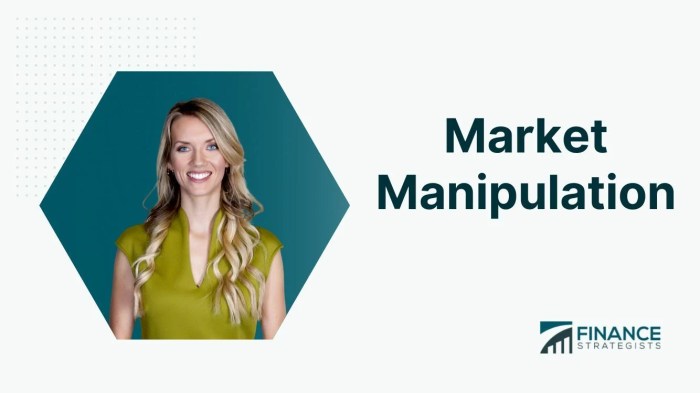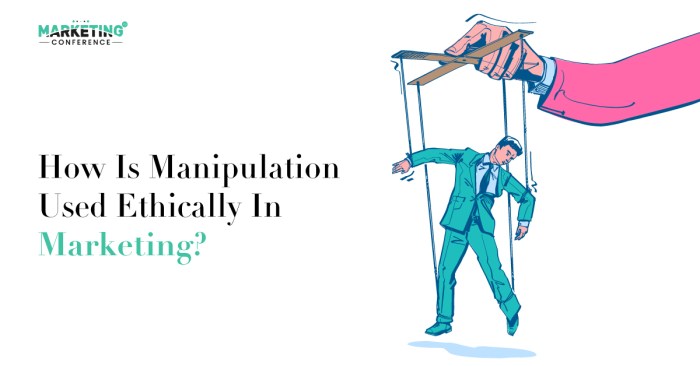Ever feel like you’re being manipulated by those slick ads? You’re not alone. Marketing has evolved, and some tactics are more sneaky than others. This isn’t about being paranoid, it’s about being savvy. We’re diving into the world of “Manipulation for Profit,” exploring how businesses use psychology to get you to buy, click, or sign up.
It’s like that scene in “The Wolf of Wall Street,” but with less cocaine and more data analysis. Buckle up, because this is going to be a wild ride.
We’ll break down common manipulation techniques, from creating a sense of urgency to appealing to your emotions. We’ll also look at the ethical implications of these tactics and how they can impact both businesses and consumers. And don’t worry, we’ll also discuss how to avoid falling victim to these marketing ploys.
By the end of this, you’ll be able to spot a manipulative marketing strategy from a mile away, and you’ll be equipped to make informed decisions about your purchases.
Understanding Manipulation in Marketing and Business

The world of marketing and business is a complex and competitive landscape, where companies constantly strive to attract customers and gain an edge over their rivals. While ethical practices are crucial for long-term success, the line between persuasive marketing and manipulative tactics can sometimes blur.
Understanding the ethical considerations and potential consequences of manipulation in marketing and business is essential for both companies and consumers.
Ethical Considerations of Manipulation in Marketing and Business
Ethical considerations are at the heart of the debate surrounding manipulation in marketing and business. While persuasive techniques are often used to highlight the benefits of products and services, manipulative tactics exploit vulnerabilities and exploit consumers for profit.
- Transparency and Honesty:Manipulative practices often involve concealing information or using deceptive language to mislead consumers. Ethical marketing emphasizes transparency, providing clear and accurate information about products and services.
- Respect for Autonomy:Consumers should have the freedom to make informed decisions without being coerced or manipulated. Ethical marketing respects consumer autonomy by providing them with the information they need to make independent choices.
- Fairness and Equity:Manipulative tactics can target vulnerable populations, such as children or the elderly, who may be more susceptible to persuasion. Ethical marketing practices strive for fairness and equity, ensuring that all consumers are treated with respect and dignity.
Examples of Manipulative Marketing Tactics
Manipulative marketing tactics can be found across various industries, employing a range of psychological techniques to influence consumer behavior.
- Fear-mongering:This tactic plays on consumer anxieties and fears to promote products or services as solutions to perceived problems. For example, a weight-loss product might use images of overweight individuals and alarming statistics about obesity to create a sense of urgency and fear.
You know how they say, “It’s not what you know, it’s who you know”? Well, in the world of marketing and business, it’s all about knowing how to nudge people in the right direction. Think of it like a really good poet, weaving words together to create an emotional response.
Check out “Maybe Not Nothing or Emergence a collection of experimental poems revisited after two decades” here , and you’ll see how powerful language can be. So, whether you’re crafting a catchy slogan or a killer sales pitch, remember that mastering the art of persuasion can make all the difference in your bottom line.
- Scarcity and Urgency:Creating a sense of scarcity or urgency can lead consumers to make impulsive decisions. Tactics like limited-time offers, “while supplies last,” or “exclusive deals” can trigger a fear of missing out and encourage immediate purchase.
- Emotional Appeals:Marketing campaigns often use emotional appeals to connect with consumers on a personal level. While genuine emotional connections can be powerful, manipulative tactics exploit emotions like guilt, shame, or desire to drive purchases.
- Subliminal Messaging:Subliminal messages are embedded in advertising materials below the level of conscious perception, attempting to influence consumer behavior without their awareness. These tactics are often controversial and have been linked to ethical concerns.
Consequences of Manipulative Practices
While manipulative tactics might offer short-term gains, they can have long-term negative consequences for both businesses and consumers.
So, you’re trying to figure out how to use manipulation for profit? It’s a game, man, and you gotta play smart. You can learn all about it by checking out this awesome podcast Download And Listen Here which breaks down the psychology behind it all.
They’ll teach you how to get your customers hooked, and leave them wanting more. Manipulation for profit is a real thing, but it’s all about using your power for good, you know? Get that bread, but don’t be a jerk about it.
- Erosion of Trust:When consumers discover they have been manipulated, it can erode trust in the company and its products. This can lead to negative word-of-mouth, boycotts, and reputational damage.
- Legal and Regulatory Actions:Manipulative practices can violate consumer protection laws and regulations, leading to fines, lawsuits, and other legal consequences.
- Consumer Dissatisfaction:Consumers who feel manipulated are likely to be dissatisfied with their purchase and may experience buyer’s remorse. This can lead to returns, complaints, and negative reviews.
- Ethical Concerns:The use of manipulative tactics raises ethical concerns about the exploitation of consumers and the erosion of moral values in business.
Manipulation Techniques for Profit

In the world of marketing and business, where competition is fierce and profits are the ultimate goal, companies often employ various strategies to sway consumers’ decisions. Some of these strategies can be considered manipulative, using psychological techniques to influence behavior and drive sales.
It’s important to understand these techniques to navigate the consumer landscape and make informed decisions.
Manipulation Techniques Used in Marketing and Business
Manipulation techniques are persuasive tactics used to influence people’s thoughts, feelings, and actions. These techniques are often subtle and can be used to promote products, services, or even political agendas.
| Technique | Description | Example | Ethical Implications |
|---|---|---|---|
| Scarcity and Urgency | This technique creates a sense of urgency and scarcity by suggesting that a product or opportunity is limited in supply or time. It often relies on phrases like “limited time offer” or “while supplies last.” | A clothing retailer advertises a “flash sale” for 24 hours only, implying that customers must act quickly to get the best deals. | While scarcity can be a legitimate reflection of limited supply, it can also be artificially created to manipulate consumers into making impulsive purchases. |
| Social Proof and Authority | This technique leverages the power of social influence by showcasing positive reviews, endorsements, or testimonials from trusted sources. It relies on the idea that if many people like something, it must be good. | A website displays customer testimonials and reviews, highlighting the positive experiences of others with the product. | Using authentic social proof can be valuable for consumers, but fake or manipulated testimonials can be misleading and unethical. |
| Emotional Appeals | This technique aims to evoke strong emotions in consumers, such as happiness, fear, or guilt, to influence their decisions. | A charity ad shows images of starving children to elicit empathy and donations. | Emotional appeals can be powerful but can also be exploitative if they prey on people’s vulnerabilities or use misleading information. |
| Framing and Anchoring | Framing involves presenting information in a way that influences how consumers perceive it. Anchoring refers to the tendency to rely heavily on the first piece of information received. | A product is advertised as “90% fat-free” rather than “10% fat,” emphasizing the positive aspect. | Framing and anchoring can be used to manipulate consumers’ perceptions and influence their choices, even if the underlying information is not entirely accurate. |
| Reciprocity and Commitment | Reciprocity involves the idea that people are more likely to give something in return if they have received something first. Commitment relies on the tendency to follow through on commitments, even if they are not entirely desirable. | A company offers a free sample of a product, hoping that customers will feel obligated to purchase it later. | While reciprocity can be a positive social norm, it can also be used to manipulate consumers into feeling obligated to buy products they don’t need. |
Ethical Marketing and Business Practices

It’s time to switch gears and talk about the flip side of the coin – ethical marketing and business practices. Think of it as the difference between a “good guy” and a “bad guy” in a movie. Sure, manipulation tactics can be tempting for a quick buck, but in the long run, they’ll leave you with a reputation worse than a villain in a B-movie.
Building a sustainable and successful business requires more than just tricking people into buying your product. It’s about building genuine relationships, earning trust, and creating a positive impact.
Best Practices for Ethical Marketing and Business Strategies
Here’s the deal: ethical marketing isn’t just about avoiding manipulation, it’s about creating a positive and meaningful experience for your customers. It’s about building trust and loyalty, not just short-term gains.
So, you wanna know how to manipulate people for profit? It’s all about understanding their psychology, and AI is giving us some serious insights. Check out this article, Artificially Human Making Sense of Automation and AI , to see how automation is changing the game.
Once you get a handle on what makes people tick, you can craft your marketing strategies to really hit home. It’s all about knowing your audience and using the right tools to get them to buy, buy, buy!
- Transparency is key:Be upfront about your product, its benefits, and any limitations. Don’t try to hide the truth or sugarcoat things. Think of it like a good friend – you wouldn’t try to pull the wool over their eyes, right?
- Honesty is the best policy:Don’t make false promises or exaggerate your claims. If you can’t deliver on what you say, you’ll lose credibility faster than you can say “buyer beware.”
- Focus on value, not just sales:Instead of trying to trick people into buying, focus on providing real value. Think about how your product or service can genuinely improve their lives.
- Embrace ethical advertising:Avoid using manipulative techniques like fear-mongering, guilt-tripping, or using hidden agendas. Instead, use ethical advertising that is informative, honest, and respectful.
- Be socially responsible:Consider the impact of your business on the environment and society. Make sustainable choices and give back to your community. Think of it as giving back to the world – it’s a win-win for everyone.
Guidelines for Avoiding Manipulative Tactics
Here are some guidelines to help you avoid the dark side of marketing and ensure you’re playing by the rules:
- Don’t use hidden agendas or bait-and-switch tactics:This is like promising someone a juicy burger, but then giving them a sad lettuce sandwich. It’s a surefire way to lose trust.
- Avoid using fear-mongering or guilt-tripping:Don’t scare people into buying your product or make them feel bad for not doing so.
- Don’t exploit people’s vulnerabilities:This includes targeting people who are struggling financially, emotionally, or physically. It’s like taking advantage of someone when they’re down.
- Don’t use deceptive language or hidden fees:Be upfront about your pricing and don’t try to trick people with confusing terms or hidden costs.
- Respect people’s privacy:Don’t collect personal information without their consent or use it in a way that violates their privacy. Think of it as respecting their personal space – nobody likes a creepy stalker.
The Importance of Transparency, Honesty, and Customer Trust
Building trust is like building a house – it takes time, effort, and a solid foundation. Here’s why it’s so important:
- Trust leads to loyalty:When customers trust you, they’re more likely to stick with your brand and recommend you to others. Think of it as a loyal fan base – they’ll be there for you through thick and thin.
- Trust builds credibility:A strong reputation for honesty and transparency can make a huge difference in your success. It’s like having a “good guy” badge – people will see you as trustworthy and reliable.
- Trust drives long-term success:Building trust is a marathon, not a sprint. It takes time and consistent effort, but it’s the key to long-term success. Think of it as a legacy – you’ll leave behind a positive impact on your customers and the world.
Book Review

This book review explores the ethical considerations in marketing and business, focusing on a book that delves into the complexities of manipulation for profit. The book examines the line between persuasive marketing and unethical manipulation, offering insights into the impact of such practices on consumers and society.
Ethical Considerations in Marketing and Business
The book, “The Ethical Dilemma of Marketing: A Guide to Responsible Business Practices,” explores the ethical implications of marketing and business practices. The author argues that while persuasion is an essential part of marketing, manipulation goes beyond ethical boundaries. The book emphasizes the importance of transparency, honesty, and respect for consumers in marketing strategies.
Yo, listen up, manipulation in marketing ain’t about tricking people, it’s about understanding their needs and desires. Think about it like this: if you’re selling a new kind of energy drink, you gotta know what makes people crave that extra boost.
Check out LIVE TO FLY FLY TO LIVE The Pilot Mindset Operating Handbook to learn how to be a master of your own destiny. It’s all about knowing your own strengths and weaknesses and using them to your advantage.
And that’s exactly what the best marketers do: they tap into what makes people tick and offer them something they can’t resist.
Key Arguments and Insights
The book’s key arguments revolve around the ethical considerations of using manipulation techniques for profit. It emphasizes that:
- Manipulation undermines consumer autonomy and can lead to harmful consequences.
- Ethical marketing practices focus on building trust and long-term relationships with customers.
- Businesses have a responsibility to ensure their marketing strategies are fair and transparent.
Strengths and Weaknesses
The book’s strengths lie in its comprehensive analysis of ethical issues in marketing and its practical recommendations for businesses. However, it could benefit from more in-depth exploration of specific manipulation techniques and their impact on different consumer demographics.
Relevance to Manipulation for Profit
The book’s relevance to the topic of manipulation for profit is significant. It provides a framework for understanding the ethical implications of using manipulation techniques in marketing and business. By highlighting the importance of ethical considerations, the book encourages businesses to adopt responsible practices that prioritize consumer well-being.
Final Wrap-Up

So, there you have it. The world of marketing is full of tricks and traps, but armed with knowledge, you can navigate it with confidence. Don’t be a sucker for slick tactics. Be aware, be informed, and make your own choices.
Remember, just like in “The Matrix,” you have the power to choose your own reality. Just don’t get lost in the rabbit hole of endless scrolling and flashing sales. Keep your eyes open, and your wallet closed until you’re sure you’re making the right decision.
Happy shopping!
FAQs
Is it always unethical to use manipulation techniques in marketing?
Not necessarily. It depends on the intent and the method. Some techniques, like creating a sense of urgency for a limited-time offer, can be ethical if they’re used transparently and don’t deceive the customer. The key is to be honest and respectful.
How can I protect myself from manipulative marketing?
The best defense is a good offense. Be aware of the common techniques, do your research, and don’t rush into decisions. Read reviews, compare prices, and ask questions. Remember, you’re in control of your own spending.
Are there any legal ramifications for using manipulative marketing tactics?
Yes, there are. Laws like the FTC Act in the US prohibit deceptive and unfair business practices. If a business uses manipulative tactics that are considered misleading or deceptive, they could face legal consequences.

